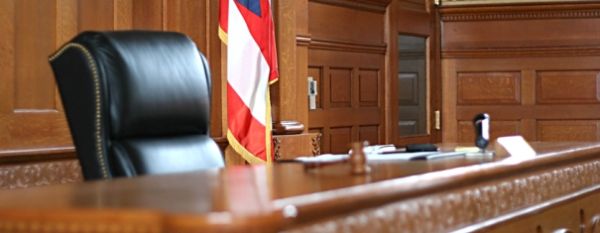Interview: Judge Robert J. Barrett "Lord of All Things Immigration"

 Judge RJB declined to be photographed in order to retain some anonymity.
Judge RJB declined to be photographed in order to retain some anonymity.
Nearly four decades ago, Judge Robert J. Barrett arrived in San Diego as a newly-appointed immigration judge ready to try his hand at adjudications. The year was 1976 and the San Diego immigration court was in its fledgling years. At that time, there was only one other immigration judge hearing cases at the San Ysidro court and the El Centro detention camp, Judge John Williams. Today, there are eight San Diego immigration judges, but Judge Barrett has since retired from his position.
During his thirty-two years on the bench, Judge Robert J. Barrett’s renown in the world of immigration law was unsurpassed. A fellow immigration judge painted the picture of the awe Judge Barrett’s decisions and leadership inspired in his co-workers in San Diego and across the country. In the words of a judicial transcriber, Judge Barrett was the "lord of all things immigration." During a recent interview with Judge Barrett, he vividly illustrated San Diego’s immigration court in its early years, the world events that shaped its growth, and the docketing system he developed that is now used by immigration courts nationwide.
Judge Barrett recalled the continued hassle the court’s original location at the San Ysidro port of entry presented. “It was not an ideal location for an immigration court,” he described, “at least with regard to people inside the United State who had notices to attend hearing. They had to drive down to the port of entry and be careful that they made the turn-off into the parking lot instead of going into Mexico. That was a continuing problem.” Thankfully, in 1977, the court was relocated to a space in the newly opened federal building downtown.
The move to the larger space downtown came just in time, because in 1979 the Iranian Hostage Crisis greatly increased San Diego’s immigration caseload. “As you may know,” Judge Barrett began, “at that time, Iranian militants had stormed the United States embassy in Tehran and taken all of the Americans hostage. In response, the federal government ordered a crackdown on Iranians living in the United States. Suddenly, the immigration court in San Diego was inundated with large numbers of Iranian cases. This put a tremendous strain on the hearing system.”
Many of the Iranians who appeared before Judge Barrett and Judge Williams were nonimmigrant students who were often in violation of their status. These students were granted permission to attend school in the US for a period of time, but had remained longer than permitted or had accepted part-time employment without the required permission of the Immigration and Naturalization Service.
At the same time, civil wars in El Salvador and Nicaragua broke out. The detention caseload in El Centro then exploded. Nationals of those countries, detained at the detention center, had previously decided not to fight their cases, but were quick to accept deportation back home. With the civil strife in their home countries, however the nationals decided not to accept prompt deportation, and instead contested their cases, applying for asylum and withholding of deportation.
“Judge Williams and I found ourselves working long hours. We continued operating under this pressure until the chief immigration judge recognized in 1984 that we needed help. We got an appointment for the third immigration judge in San Diego, Henry G. Watkins. And in 1985, the chief judge decided that it was necessary to appoint a non-attorney manager to handle the administrative aspects of the immigration court operation and that is when Brent Perkins, the present court administrator, joined the operation.”
By the time Judge Barrett retired in January 2008, the caseload in San Diego had settled considerably since the court’s early years. He remarked that upon leaving, the cases were being handled very efficiently and the judges sitting at that time were very competent technicians of the law. When asked what benefits he experienced working at the San Diego immigration court, Judge Barrett concluded,
“I can say that the benefits that I experienced on the immigration bench were the ability to learn the intricacies of the law. Immigration law is not an easy topic because it is quite esoteric and complicated. More than one Court of Appeals has said that, next to the Internal Revenue Code, the immigration law is the most complicated.I think that the singular thing that I experienced was that I was never bored doing the cases and I was always eager to take the bench to preside in hearings. The reason for that is I never fell into a rut of repetition because I was dealing with the human experience and the facts and the variations on the facts were always different and intriguing.”
When Judge Barrett arrived in San Diego, he joined a court lacking the necessary structure that the integrity of an immigration court demands, but before leaving, he created a legacy that remains today.



